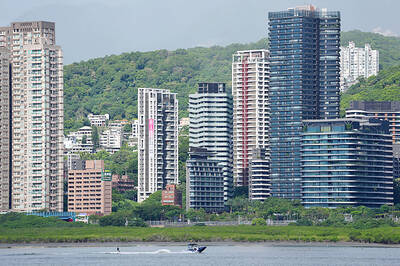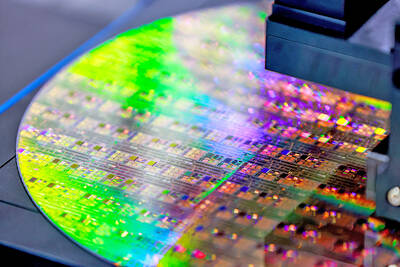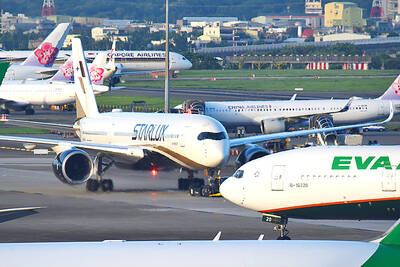An economics official said yesterday that Taiwan and China could within two years conclude tariff reduction or exemption talks for more than 5,000 items not included on the Economic Cooperation Framework Agreement (ECFA) “early harvest” list.
“My understanding is that both sides [of the Taiwan Strait] want to conclude the talks at once” instead of setting up a second “early harvest” list, Bureau of Foreign Trade Director-General Bill Cho (卓士昭) said.
Taiwan and China signed the ECFA in June 2010. The pact took effect in September that year, with the “early harvest” program for tariff reductions or exemptions taking effect on Jan. 1 last year.
China has started removing tariffs on all Taiwanese goods and services on the early harvest list, which includes more than 500 items.
The tariff removal is being carried out in three phases over two years, with the tariff-free goal scheduled for completion by January next year.
During a Cabinet meeting earlier in the day, Premier Sean Chen (陳冲) said that follow-up talks under the ECFA must continue, including talks on items not on the “early harvest list,” such as an investment protection pact and trade in the service sector, Cho said.
Cho said both sides want to have the long-stalled investment protection agreement signed in the eighth round of negotiations, reportedly set for the first half of this year.
He said that no industries had been ruled out of talks for the service sector, including education.

Taiwan’s rapidly aging population is fueling a sharp increase in homes occupied solely by elderly people, a trend that is reshaping the nation’s housing market and social fabric, real-estate brokers said yesterday. About 850,000 residences were occupied by elderly people in the first quarter, including 655,000 that housed only one resident, the Ministry of the Interior said. The figures have nearly doubled from a decade earlier, Great Home Realty Co (大家房屋) said, as people aged 65 and older now make up 20.8 percent of the population. “The so-called silver tsunami represents more than just a demographic shift — it could fundamentally redefine the

The US government on Wednesday sanctioned more than two dozen companies in China, Turkey and the United Arab Emirates, including offshoots of a US chip firm, accusing the businesses of providing illicit support to Iran’s military or proxies. The US Department of Commerce included two subsidiaries of US-based chip distributor Arrow Electronics Inc (艾睿電子) on its so-called entity list published on the federal register for facilitating purchases by Iran’s proxies of US tech. Arrow spokesman John Hourigan said that the subsidiaries have been operating in full compliance with US export control regulations and his company is discussing with the US Bureau of

Businesses across the global semiconductor supply chain are bracing themselves for disruptions from an escalating trade war, after China imposed curbs on rare earth mineral exports and the US responded with additional tariffs and restrictions on software sales to the Asian nation. China’s restrictions, the most targeted move yet to limit supplies of rare earth materials, represent the first major attempt by Beijing to exercise long-arm jurisdiction over foreign companies to target the semiconductor industry, threatening to stall the chips powering the artificial intelligence (AI) boom. They prompted US President Donald Trump on Friday to announce that he would impose an additional

China Airlines Ltd (CAL, 中華航空) said it expects peak season effects in the fourth quarter to continue to boost demand for passenger flights and cargo services, after reporting its second-highest-ever September sales on Monday. The carrier said it posted NT$15.88 billion (US$517 million) in consolidated sales last month, trailing only September last year’s NT$16.01 billion. Last month, CAL generated NT$8.77 billion from its passenger flights and NT$5.37 billion from cargo services, it said. In the first nine months of this year, the carrier posted NT$154.93 billion in cumulative sales, up 2.62 percent from a year earlier, marking the second-highest level for the January-September